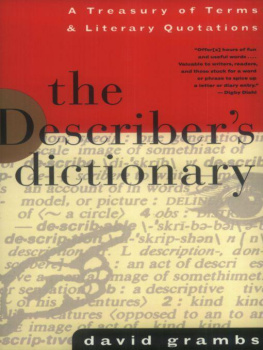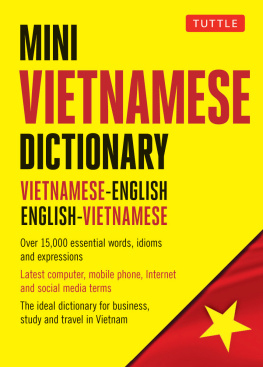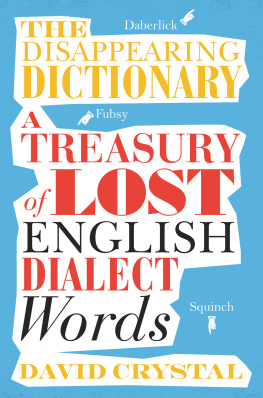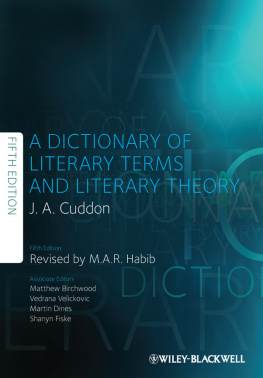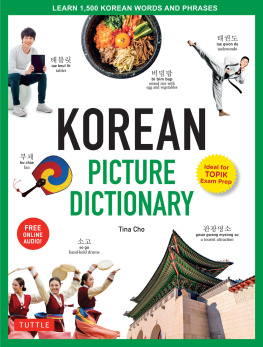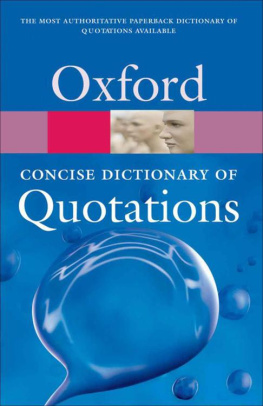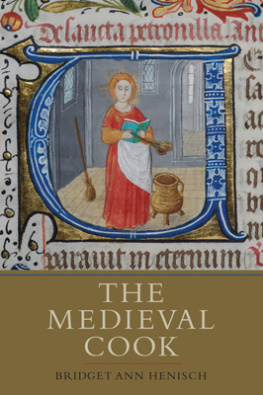Table of Contents
BY THE SAME AUTHOR
Dimboxes, Epopts, and other Quidams:
Words to Describe Lifes Indescribable People
Bemsteins Reverse Dictionary, 2nd Ed. (Ed.)
The Ultimate Spelling Quiz Book
The Random House Dictionary for Writers and Readers
The Endangered English Dictionary:
Bodacious Words Your Dictionary Forgot
Copyright 1993 by David Grambs
All rights reserved
Printed in the United States of America
The text of this book is composed in 12/14-5 Bembo with
the display set in Bembo.
Composition and manufacturing by The Haddon Craftsmen, Inc.
Book design by Margaret M. Wagner
Library of Congress Cataloging-in-Publication Data
Grambs, David.
The describers dictionary / by David Grambs.
p. cm.
1. English language-Synonyms and antonyms. 2. Description
(Rhetoric) I. Title.
PE1591.G67 1993
423.1-dc20 92-957
ISBN 0-393-31265-8
W W Norton & Company, Inc.
500 Fifth Avenue, New York, NY. 10110
www.wwnorton.com
W W Norton & Company Ltd.
Castle House, 75/76 Wells Street, London WIT 3QT
0
For Di
PREFACE
Consider the case of a traveler or student who wants to describe, in a letter, what the scenic landscape and local dwellings are like in a remote and beautiful area of Ecuador where she is staying. She cant think of the word for a basin-like depression between two mountain peaks, or the word for the shape of a particular Indian symbol. She is not having an easy time finding the right wordsif they are to be foundin her trusty thesaurus.
Or take the case of a student naturalist finishing his first article for a magazine. He needs the term meaning living along a river as well as the technical adjective for peacock-like. He cant come up with them in his dictionary or Rogets.
Or suppose a newspaper reporter wants to open an important investigative story she is doing with an evocative, detailed description of an imposing nineteenth-century courthouse building in the town central to her story. Her knowledge of architectural terms stops at the word column. She wants the correct terminology, but she wants the writing to be her own. Where can she quickly find the descriptive vocabulary to make that courthouse a vivid presence or setting to her readers?
Or consider the aspiring science-fiction writer who is honing a pithy description of a character based on a strange old man he once met. He wants the right worda different wordfor wrinkled. Also, he cant think of that other la-di-da three-syllable word from French meaning plump ness.
The intent of The Describers Dictionary is to make a variety of descriptive words expediently available, or referable, in a way that neither a thesaurus nor a dictionary does. (It does not deign or claim to detail fine points of meaning, notably between synonyms, for which a standard dictionary is better suited.) Optimally, the book should be most helpful as a kind of descriptive-term memo pad or checklist for anybody needing quick access to just the right vocabulary for conveying in words some sort of picture.
Description is (with argumentation, exposition, and narration) one of the four traditional forms of discourse. It is the art of realistic depiction, or what the literary like to call verisimilitude. This is a craft that begins with a basic descriptive vocabulary. In the main, the idea here is to supply not terms for objects and creatures but terms for describing those objects and creatures. Dont look between these covers for any abstractions, isms, ologies, or similarly intellectual or philosophical vocabulary.
Physical and adjectival best describe the approach of The Describers Dictionary.
Physical because it is a gathering of words exclusively for describing the physical worldmuch of it, at leastin which we live.
Adjectival because, unlike most specialized reference books, this one has more adjectives (or adjectival forms) than nouns in its pages. To describe things, or animals, or people, it helps to know your basic substantives, as plain identifying or designating nouns are fundamental in any description. But modifiers, or attributives, are the main stuff of description, and Ive favored the adjectival form here.
The format should make it easier to find purely physical terms than you can in a standard Rogets, where chockablock run-on lists (and a usually confusing index) make distinctions between related words less than clear; or than you can in an alphabetical dictionary, where defining is the primary purpose.
This format falls, not surprisingly, somewhere between that of a thesaurus and that of a dictionary. Simple lead-in definitional phrases precede most groupings of terms, but in many instances familiar words are merely thematically clustered for easy reference; their meanings should be clear enough, and the readers intelligence is not underestimated. Adjectival forms, again, predominate. Obviously, most of these modifiers have their corresponding noun, adverb, or even verb counterparts, and Ive made the bold assumption that readers will not have too much trouble ascertaining the latter, if occasionally with a quick check of a standard dictionary.
Regarding the way the book is organized, common sense rather than a particular schema has been my guideor seat-of-the-pants intuition rather than any rigorous scientific codifying principle (as in a thematically subsumed thesaurus). Certainly other arrangements would have been possible. I only hope that the presentationand spacing that divides groupings of related terminologyworks well enough that you will always be able to zero in fairly quickly on a particular subject area or word sought.
The books terminology serves the craft of physical description, and more specifically visual description (with the exception of a small section on tactile adjectives pertaining to surfaces and another on common descriptives for peoples voices). It covers phenomena ranging from universal shapes and geometric patterns to general attributes of animals and human beings. The Describers Dictionary also includes useful vocabulary for describing a building or house or (the art of what is technically called chorography) a particular tract of landscape.
Terminologies can easily overlap. The different sections of the book are by no means entirely exclusive of one another, and many of the illustrative quotations confirm this, containing several words that will be found under different headings in the text. For example, modifiers for shapes or forms may be useful in describing buildings or animals. A number of the terms under Patterns and Edges could as easily appear in the Surfaces and Textures section, and the words found under Light and Colors, of course, have virtually universal application.
If a picture is worth a thousand words, perhaps an actual literary descriptive passage may be worth more than a hundred definitions. Illustrative quotations from prose literature are an important complement within these pages. If a book is to provide readers with categorized terminology for visual description, why shouldnt it also afford examples of vivid pictorial writing by some of the finest writers in the English language?
From both fiction and nonfiction, youll find a variety of such passages throughout the book. Almost all are from native writers of English, as opposed to translations from world classics. They are not here as mere dressing. There is, I think, a kind of felicitous synergism created when words-to-refer-to are accompanied by brief passages readable in their own right, glowing snatches of prose by reputable and even great writers. The quotations help to bring the texts terminology to life (particularly for those who believe all reference books are inescapably deadly dry), and I hope that they make the book, more than a reliable word reference, an ever browsable little treasury of worthy prose-description gems. Whether youre a professional writer or merely somebody who could use this book for the occasional descriptive touch in a school paper or personal letter, some of these patches of published description should offer a little tug of inspiration orif that is too arch-literary a wordencouragement.

